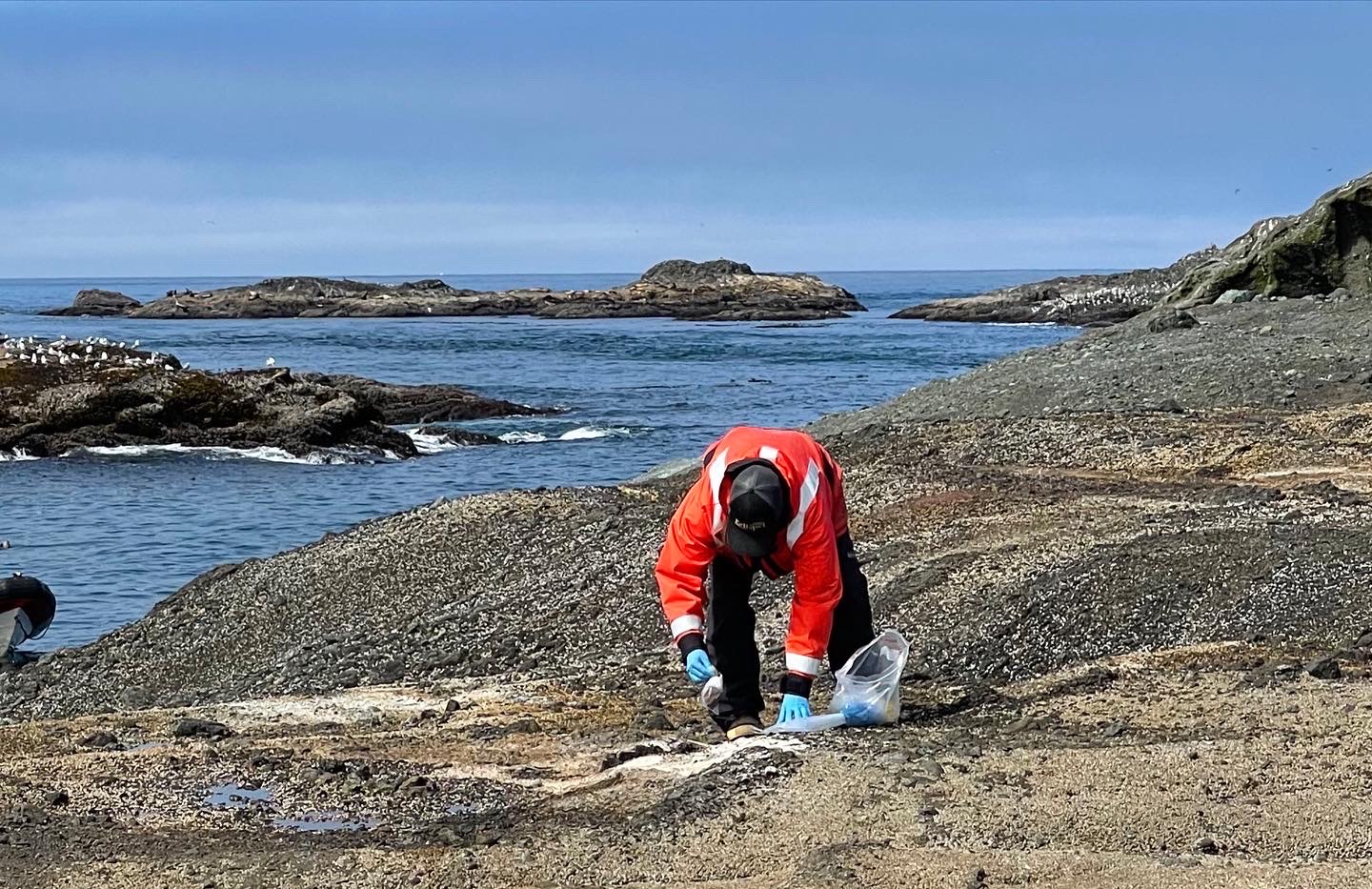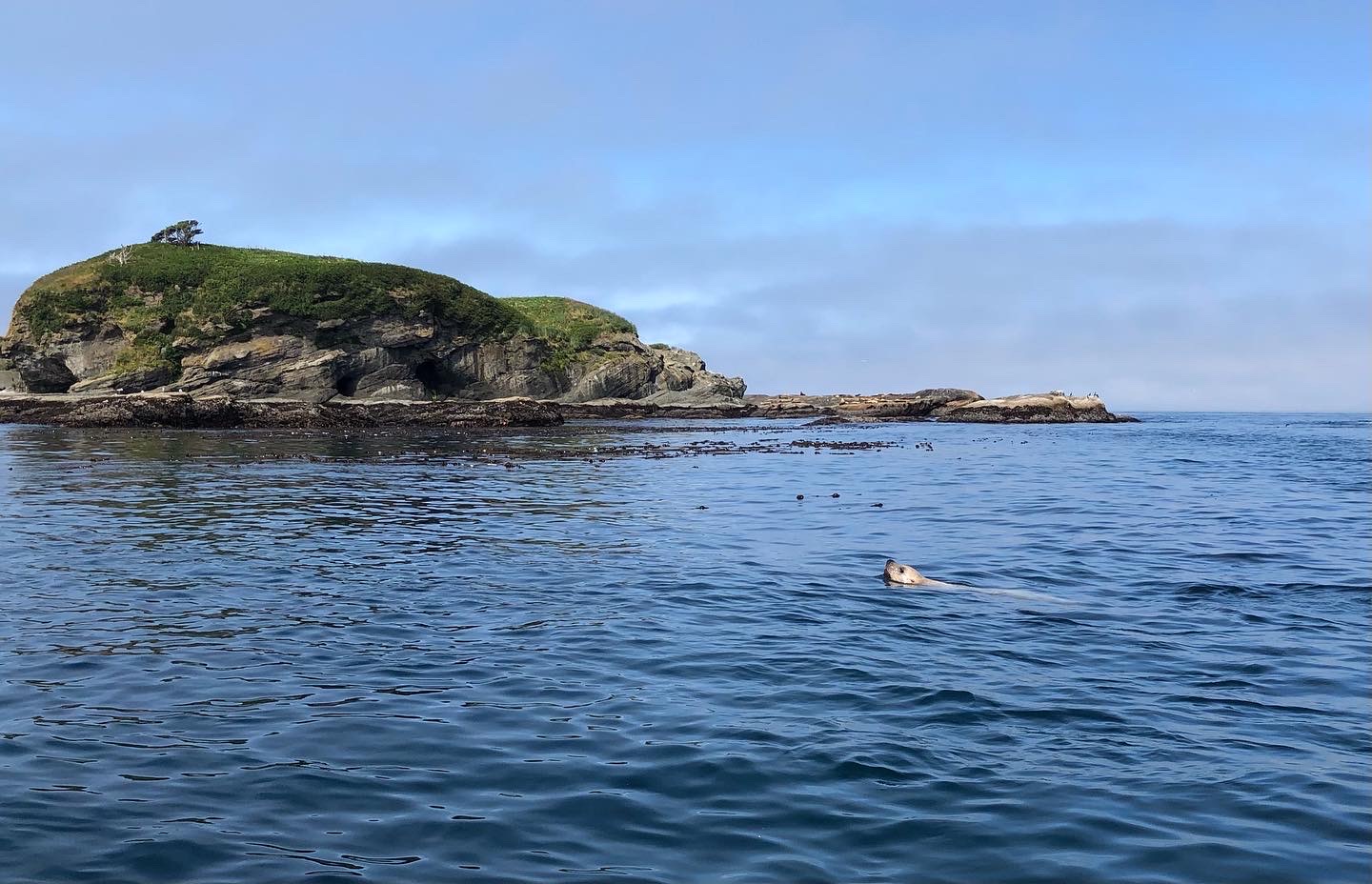AUGUST 2021
Zoë's Blog
Zoë Lewis, graduate student
1 August 2021
July has been a combination of lab work and research, as per usual, but I finally was able to also do some field work! Visiting Neah Bay was an incredible experience that reminded me why this project aligns so well with my interests.
Besides my passion for marine projects focusing on salmon conservation and predator prey relationships, I was really excited about this position working directly with the Makah tribe and their fisheries department. Before starting my masters, I was going to try to spend time out on the peninsula early on to establish a relationship with the fisheries department, however, COVID made that challenging. When I finally got to go out during the second week in July, I was very excited to finally get the opportunity to work with the Makah fisheries interns. Originally, the plan was for them to come visit the WWU campus, but again, COVID made that less achievable. So. I went to them!
For the majority of the week, I spent my time hanging out with the 4 high school fisheries interns. Although I was nervous about diving back into education, I immediately found myself at home in their labs. I was so impressed by the variety of topics we were able to cover in one day… from visual surveys, to the DNA metabarcoding process of analyzing scat, the interns followed every step of my project. They even helped me scoop scat! We also worked on fish bone identification and even a bit of radio telemetry to take a break from lab work. I was nervous about filling the whole day, but in the end… I had trouble getting them to go home at 5pm. I look forward to working with the interns again next year, hopefully, with less COVID issues and more time spent together.
It was also great to finally participate in the actual scat collection. Luckily, we had great landing conditions for accessing the haulout sites near Tatoosh island. Although Jon and Liz had been communicating the challenges faced while collecting scats, it was a whole different experience first-hand. Sea lion scats are rather large, and easy to collect, however, they would get stuck in barnacles. I found myself trying to collect every single bit, however, I realized this was a slightly hopeless task. Obviously, this leaves room for bias in the hard parts analysis portion of my data, since there may be additional hard parts missed between the barnacles. Also, I realized how long scat collection can take! I am very appreciative to Jon and Liz, who are performing the scat collection every month, in less than ideal conditions.


Scat collection and Steller sea lion in Neah Bay. Photos by
Shilaily and Z. Lewis.
I am still incredibly honored that I was granted permission to spend time on the Makah tribal lands during a pandemic. I came home from Neah Bay with newfound inspiration to dive back writing more and with a new understanding of the ecosystem. I also brought with me some Olive snail shells, gifted to me by the interns... who I hope will reach out anytime they need anything! I also left with a newly designed lesson plan for teaching DNA metabarcoding and qPCR. I hope that through this project, I can contribute to the body of research guiding the ecosystem-based management approach that the Makah fisheries department utilized to manage their usual and accustomed fishing grounds.
Kyra's Blog
Kyra Bankhead, undergraduate student
1 August 2021
Although not much has been happening with my research project, I have been very busy with graduate school applications. I am looking into many schools with my top choices being University of Hawaii at Manoa, Scripps Research Institute of Oceanography and University of Oregon. I have been focusing on reading the faculty’s research and have found some amazing programs I would love to join! For many of the graduate programs I would need to have funding to be accepted so that is another big task I am looking into. These funding opportunities include NSF GRFP, EPA, Dr Nancy Foster Scholarship Program, NDSEG, East West Center and the Gates Millennium Scholars Program. Most of these funding program’s deadlines aren’t until October but I am trying to get all applications done by the end of summer.
I also put in my two weeks for my job so that I can focus on school and find other opportunities to grow in the fall. I feel that I have learned all that I can at my job and am excited to apply to internships and jobs to obtain more knowledge in my field. I am so excited to continue my research and hopefully focus on more data analysis approaches during the summer as well.
Until then,
Kyra Bankhead
Holland's Blog
Holland Conwell, undergraduate student
1 August 2021
It has been strange not being in the lab as consistently as previous months, but I’m keeping myself busy! Alongside my aforementioned summer work as a tour guide, I’m also chugging along with writing the paper. I met with Alejandro and Dietmar earlier this month to discuss progress on this project and review aspects of the final report to PSP. I will be merging my introduction with points made in this paper, but we agreed that this should happen a bit later.
In other news, 92% of the ~2000 samples were sexed despite a whole host of unanticipated delays! Thanks to all of Zoë’s hard work in the lab, we are on track for finishing off the rest of the samples. With all these exciting developments and some interesting initial trends seen in the sexed dataset, moving onto another task and polishing the introduction off later seemed to be the best idea. Currently I’m working on the methods section, and I’m feeling quite grateful for my experience in the lab for Zoë’s diet analysis project! I grew quite familiar with the scat processing procedure, so writing this section of the methods has been a bit easier. Hopefully I will soon be able to dig into the complete dataset, but in the meantime, I’ll be continuing work on the methods section!
Kathleen's Blog
Kathleen McKeegan, graduate student
1 August 2021
As always, things take longer than I expect them to. Last month, I was hoping I would have a huge chunk of the Photo IDs done by this point. But of course, completing the catalog confirmation took a few weeks longer than I expected. Luckily, the end result has been incredibly helpful. We now have a catalog of seals that are all 100% confirmed. All mis-matched seals have been fixed and any seals that have not been confirmed in 360 degrees (AKA we only have right-side photos of the seal) are now in an appendix for further analysis. This new system means the Photo ID process can go faster and has less potential for error. I also made notes about any changes that need to be made to our data sheets from previous years based on incorrect IDs or mis-matched seals. Although this process was tedious, I can now move forward into the Photo ID and data analysis process with more confidence in our findings.
Since finishing the catalog, I have been working on Photo IDs for the Oceans Initiative photos. It’s slow work, but really quite fun! Already I feel that I’ve developed a keen eye for recognizing many individuals and I’m getting faster and faster each day. Plus, Kate is a Photo-ID machine and has completed a lot of the ID-ing for the lab photos already, so she can help me with the Oceans Initiative photos. I’m hoping we will have all the easy ID’s complete by the end of this month, at which point we can spend more time working on the tricky photos to ID. It’s a tedious process, but I think we can do it!
All in all, summer is going well but it’s going by fast. I have a lot of work to do before summer ends, from the photo IDs to my work at Washington Sea Grant as the Science Communications Fellow. Sometimes I feel a little bogged down in all this computer work, especially when the sun is shining outside. Plus, it can be easy to forget about the big picture when you’re just staring at photos on a computer all day long. Luckily, I had a moment that renewed my excitement the other day. I was walking around Ballard Locks a few weeks ago with my partner and he and I decided to go see the fish ladder (because fish are so cool!!!). As we were walking over there, I looked over at this platform and noticed a very familiar pulley system and power cord. The TAST is back! Oceans Initiative has been deploying it at Ballard Locks again this summer to deter seal predation on salmon. Seeing the TAST in the field again reminded me what this is all about. I am really excited to begin analyzing our data and looking at the effects of the TAST. I can’t wait to see what we discover! But for now, I will keep plugging away at these photo IDs. Hopefully I’ll have more to report next month!
Kate's Blog
Kate Clayton, undergraduate student
1 August 2021
This month has been fairly low-key in terms of the seal workload. Kathleen and I are continuing to crop, ID, and record seals for the Oct-Dec 2020 salmon run. We are keeping track of seal presence and their foraging successes which we will eventually use to determine the effectiveness of the TAST device. We are almost done with the cropping which is exciting! We are now both working on photos we received from OI (Ocean’s Initiative) and I have nearly all the lab photos done.
Kathleen and I have had a couple of meetings to discuss our process on some issues that have arisen as well as to create some new IDs for new individuals. We are ahead of schedule on the cropping but I have a feeling the photos of poor quality (which I am afraid there are a great deal of) are going to cause us the most trouble. The ID process has become extra fun now that I can recognize some of the seals’ markings which helps speed up the process a great deal! I have been averaging about 6.5 hours a day and it is so nice that I can take breaks and get it done when it works for my schedule. I am so grateful for this scholarship and to be a member of this lab!